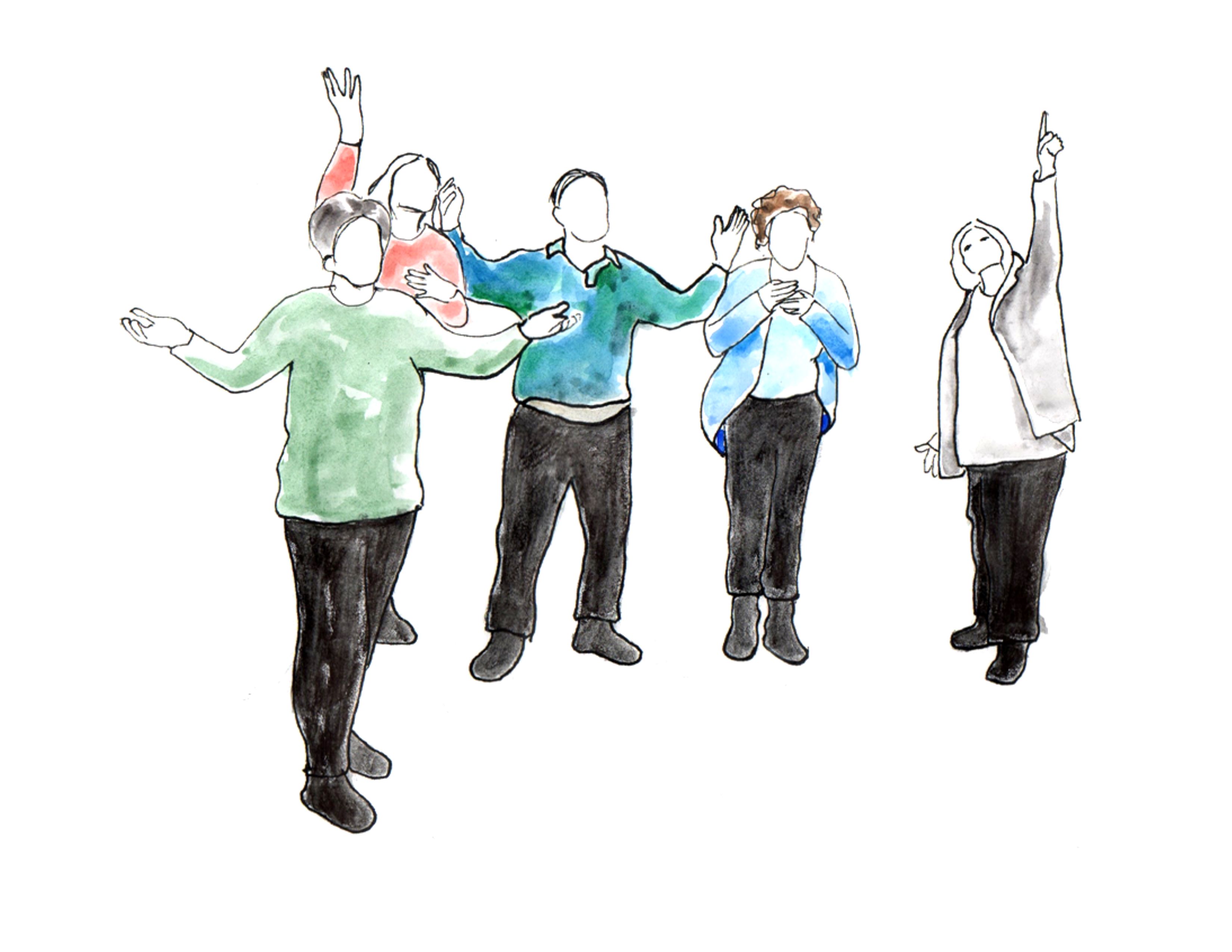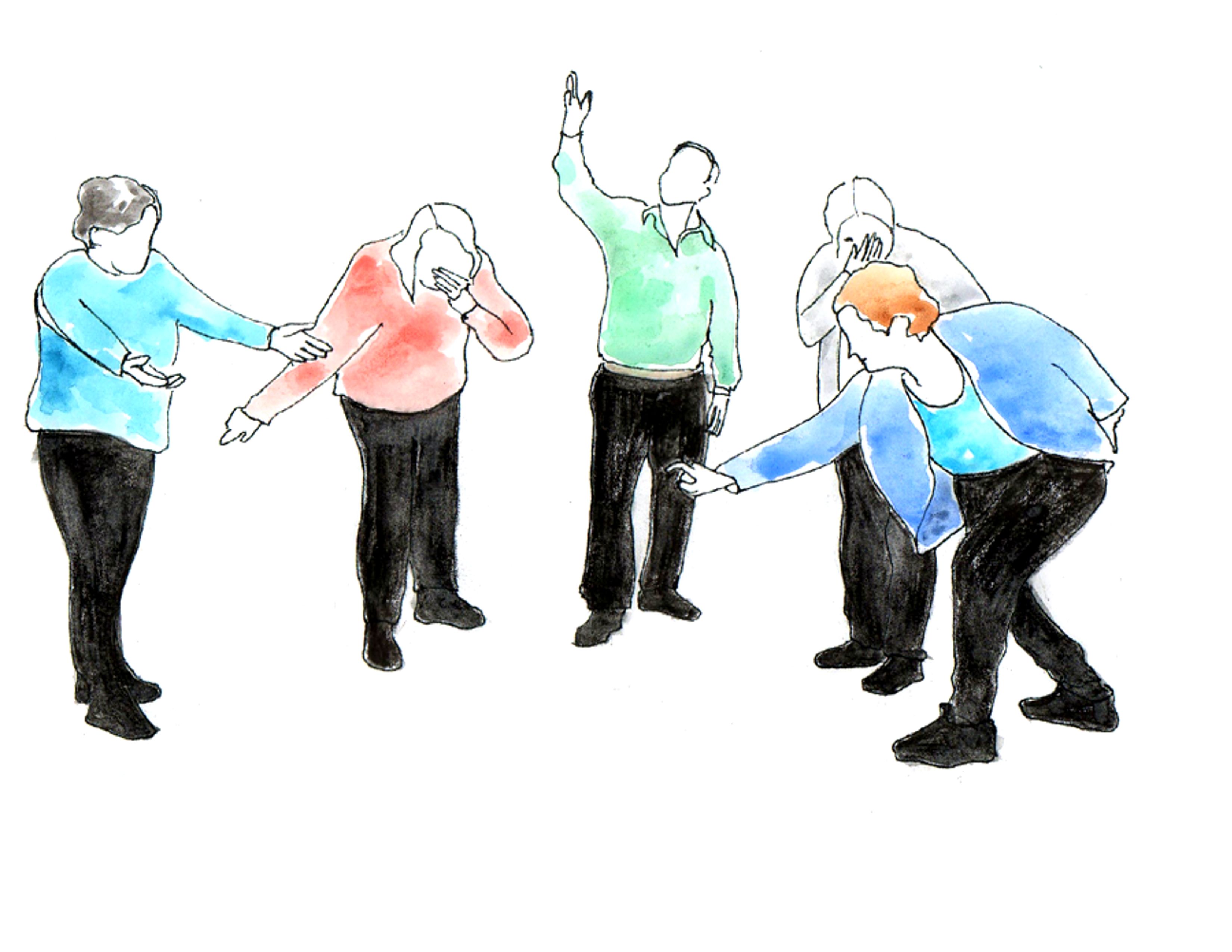Josie is a senior citizen who lives alone in an apartment halfway to the top of her high-rise building in downtown Hamilton.
Josie is frustrated by frequent fire alarms. She regularly finds herself struggling to race down the stairs in the middle of the night, her two dogs in tow, only to stand outside in the cold with her neighbours for up to forty-five minutes at a time.
Josie often doesn’t go out because she’s scared she may get trapped in the elevator. It often gets stuck between floors, and everyone knows the super is too busy playing solitaire on her phone to even notice.
While Josie’s experiences may sound familiar to many tenants living in Hamilton, Josie herself is a fictional character.
Every week for the past three weeks, a small group of Hamilton renters has been gathering with the Transforming Stories team to develop believable characters and true-to-life situations that represent life as a tenant. Josie and her experiences were created using a community-engaged performance technique known as ‘image theatre’.
For the past two weeks, our group has been having a lot of fun experimenting with putting our bodies into collective statues (we call these ‘images’) that help us to tell a story about life in the city.
Last week participants imagined the ideal future Hamilton. They created a series of images that showed characters who took care of each other, felt connected to each other, and spontaneously danced with each other in their local park!

Last week we also asked folks to create images of what life is really like as a tenant in Hamilton. Our group experimented with several images depicting life in poorly maintained apartment buildings. We saw images of people disconnected from each other, looking downtrodden, and feeling frustrated about chronic maintenance issues.

The difference between these two images is pretty stark, and it left us with nagging questions about the grey areas between the problem images and the ideal images. What are the practical steps to creating a better and more inclusive Hamilton?
This week, we explored some of those grey areas.
This is how our group generated the images of Josie and her neighbours dealing with elevator and fire alarm problems. These new images led to some interesting discussion. We found it really interesting, for example, that neighbours were getting to know each other in the context of difficult living situations, such as waiting for a broken elevator or standing outside together during a fire alarm.
These images prompted questions related to what exactly makes living in an apartment building difficult and/or bearable. We asked each other:
- How do inter-personal relationships amongst neighbours affect tenant organizing?
- What exactly are the dynamics that prevent people from living together in harmony?
We will be taking up some of these issues, and others, next week!
If you have ideas about the answers to these questions, please let us know by leaving a comment.


How do inter-personal relationships amongst neighbours affect tenant organizing?
A few observations from personal experience of this:
Tenants who are reclusive or have mental health challenges can feel uneasy about participating in a tenant gathering or action since they are used to keeping a distance from their neighbours.
On the other side of the coin, I was uneasy about approaching my neighbour because she had been threatening and abusive to me and other tenants when she had had a breakdown in her mental health and since that time had been very reclusive. I wasn’t sure how she would react to being approached but she seemed relieved since, it turned out, the landlords had been trying to evict her and she was battling it alone.
Others may fear rocking the boat with the landlord because they feel they have nowhere else to go and their sense of vulnerability is too overwhelming.
There are also those with so many other challenges/problems that they don’t have time or energy to get involved.
There are tenants who one might normally prefer to avoid – we have a tenant with a drinking problem who has been noisy and combative with other tenants when on a bender. It’s a bit intimidating to approach that tenant even though she may usually be quite reasonable. But one never knows which version of her will be at the door.
Also, we have a tenant who gets a rent rebate for taking out the garbage and sweeping the hallways. He has an interest in being friendly with the landlords and has been known to SNITCH on other tenants who complain! So there are issues about how much to include this person in organizing. There have been discussions about what to do since, as a tenant, he has a right to be invited to the table but there is a disagreement about whether to or not.